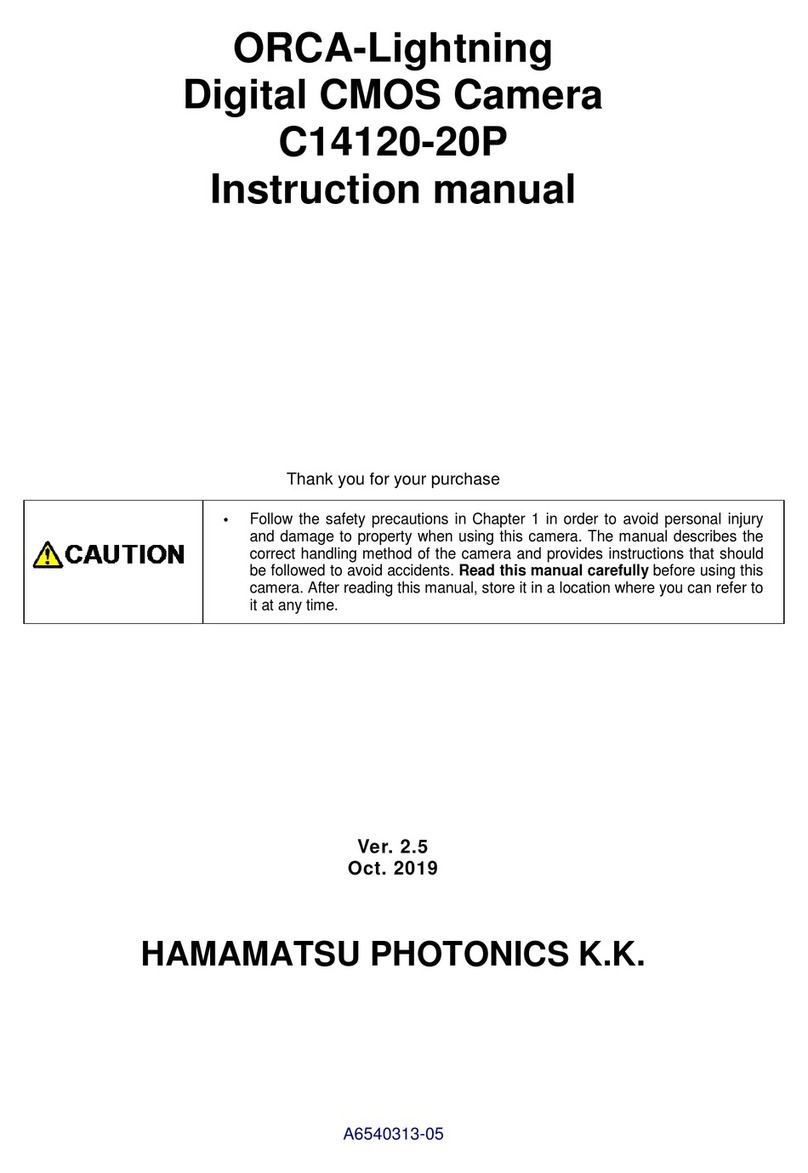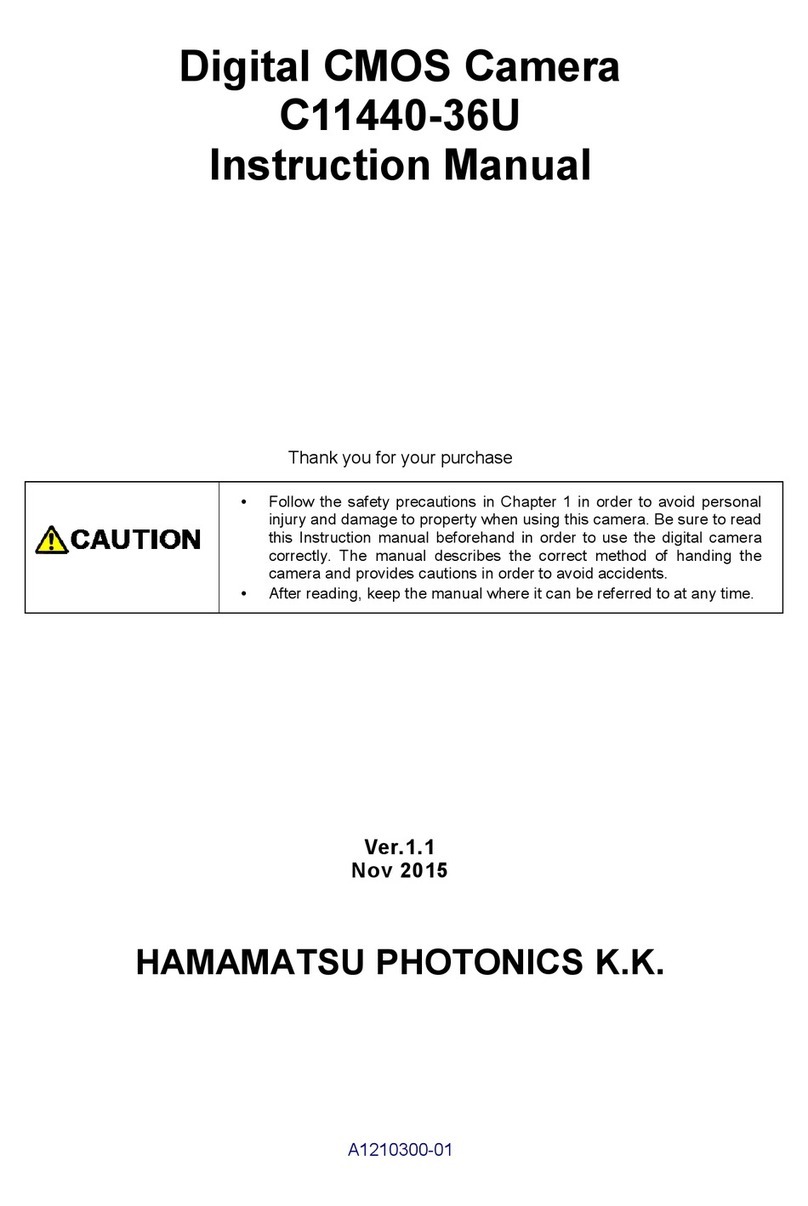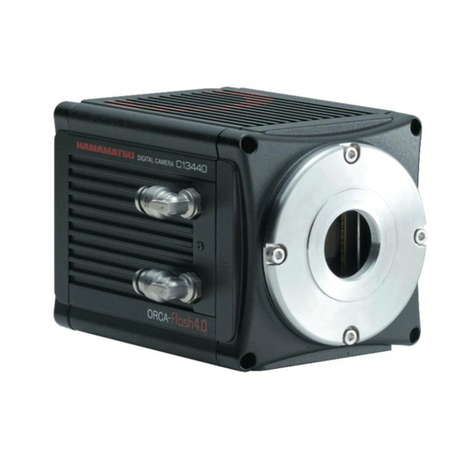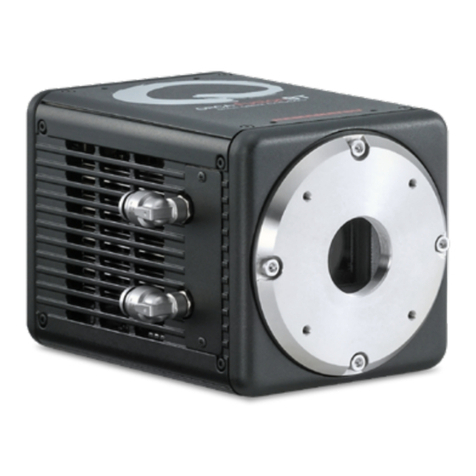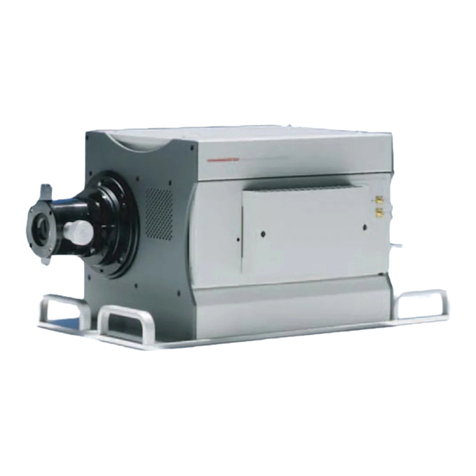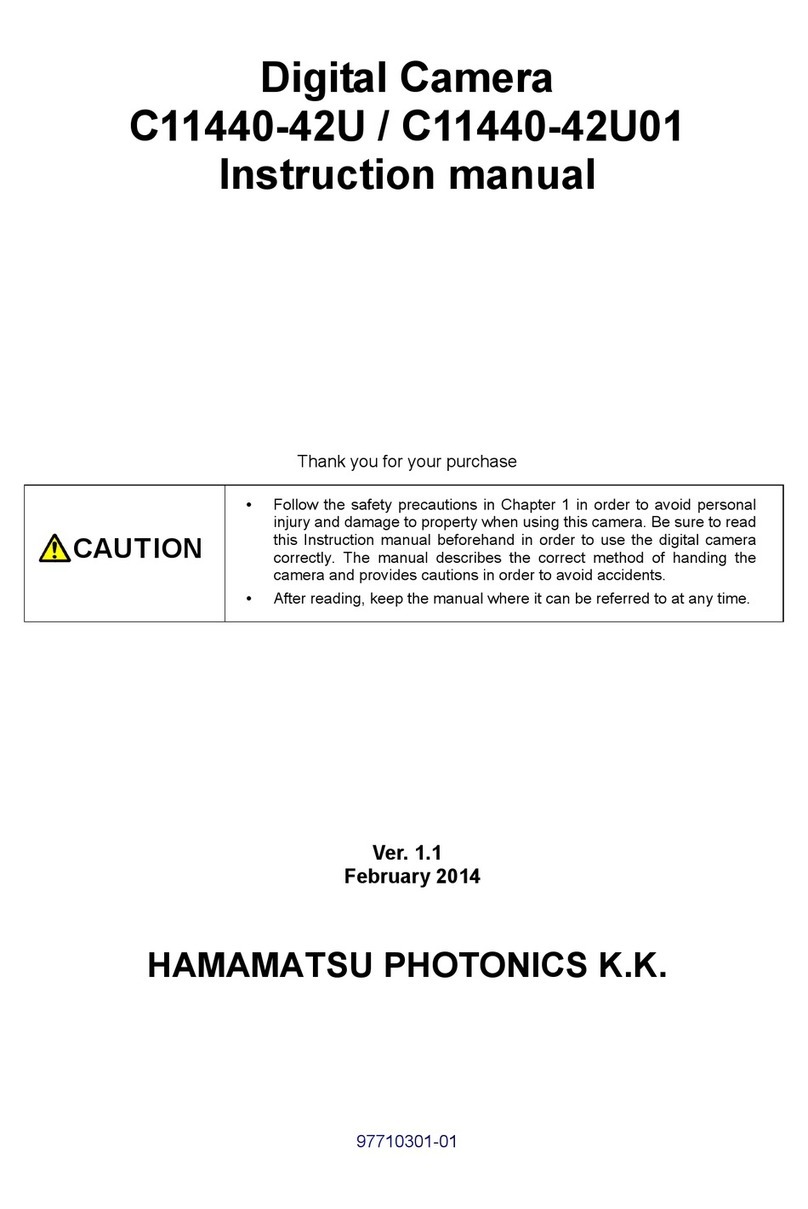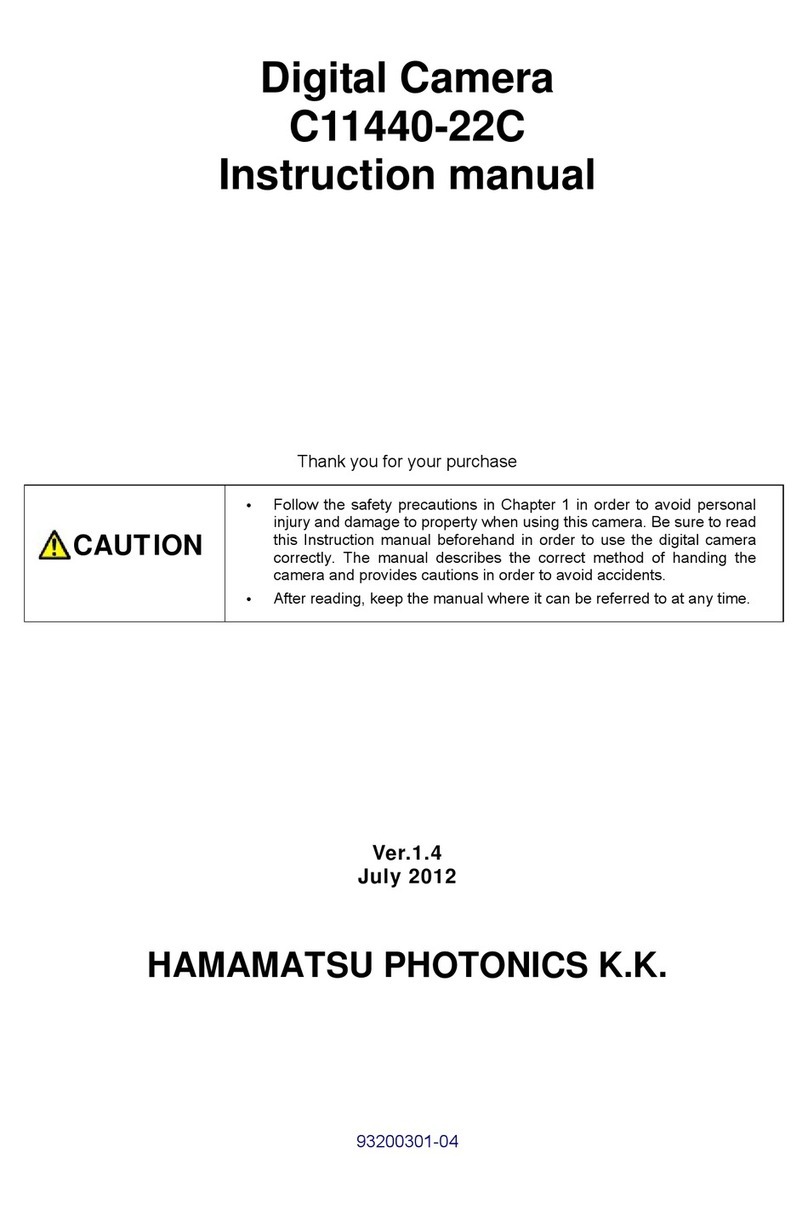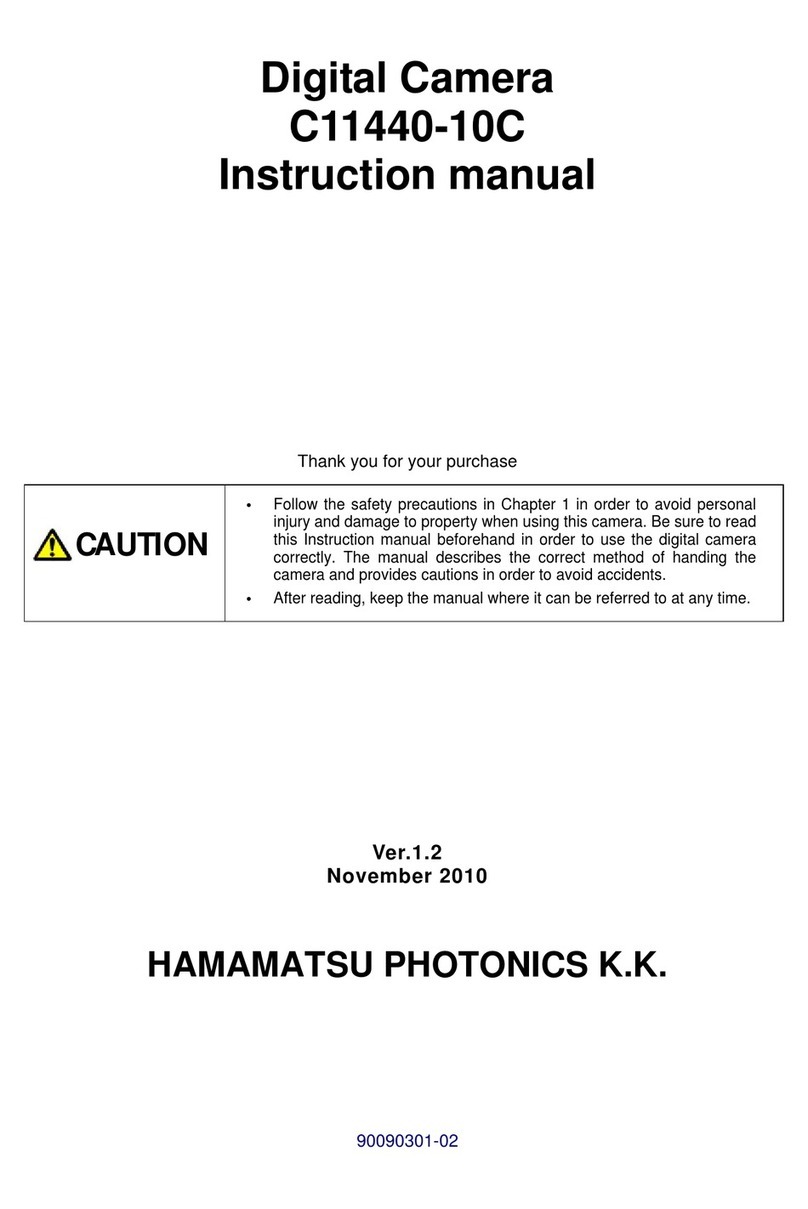
C11440-42U30/C11440-42U31 Instruction manual_Ver.1.2
6
C
Co
on
nt
te
en
nt
ts
s
1. SAFETY PRECAUTIONS............................................................................ 1
1-1 SYMBOLS..............................................................................................................1
1-2 CLASSIFICATION OF WARNINGS......................................................................1
2. CHECK THE CONTENTS OF PACKAGE................................................... 4
3. INSTALLATION........................................................................................... 5
4. OVERVIEW.................................................................................................. 8
5. FEATURES.................................................................................................. 8
6. NAME AND FUNCTION OF PARTS......................................................... 10
7. CONNECTION........................................................................................... 13
7-1 CONNECTING OF CABLES...............................................................................13
8. OPERATIONS ........................................................................................... 14
8-1 OPERATING PRECAUTIONS.............................................................................14
8-2 PREPARING FOR IMAGING ..............................................................................14
8-3 IMAGING..............................................................................................................14
8-4 END OF IMAGING...............................................................................................14
9. DESCRIPTION OF VARIOUS FUNCTIONS ............................................. 15
9-1 THEORY OF THE CMOS IMAGE SENSOR.......................................................15
9-2 NORMAL AREA MODE ......................................................................................17
9-2-1 Readout method (Scan mode) ..................................................................... 17
9-2-2 Camera operation modes............................................................................. 18
9-2-3 Frame rate calculation.................................................................................. 19
9-2-4 Configuring exposure time............................................................................ 22
9-2-5 Timing chart of camera operation modes..................................................... 23
9-3 W-VIEW MODE....................................................................................................35
9-3-1 Readout method (scan mode)...................................................................... 35
9-3-2 Camera operation modes............................................................................. 36
9-3-3 Frame rate calculation.................................................................................. 36
9-3-4 Configuring exposure time............................................................................ 39
9-3-5 Timing chart of camera operation modes..................................................... 40
9-4 REAL-TIME CORRECTION FUNCTIONS..........................................................43
10. PRECAUTION WHEN USING the CMOS IMAGE SENSOR .................... 44
11. MAINTENANCE ........................................................................................ 45
11-1 CARE ...................................................................................................................45
12. TROUBLESHOOTING............................................................................... 46
12-1 IMAGE IS NOT TRANSFERRED........................................................................46
12-2 ALTHOUGH IMAGES ARE TRANSFERRED ....................................................46
13. SPECIFICATIONS..................................................................................... 47
13-1 CAMERA SPECIFICATIONS..............................................................................47
13-2 SPECTRAL RESPONSE CHARACTERISTICS(TYP.) ......................................50

